NYC’s Forgotten ‘War on Christmas Trees’
Discover how an obscure holiday crackdown affects festive street vendors today!

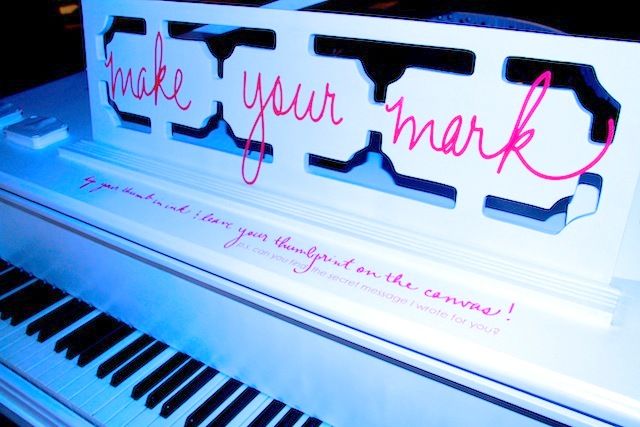
High above the bustle and noise of Times Square, piano keys tinkled as guests of the Sing For Hope Pianos Launch Party admired the 88 new painted pianos that the organization will be scattering throughout public places in the city’s five boroughs over the next two weeks. (The organization chose to debut 88 new pianos because there are 88 keys on a piano).
A nonprofit charity whose primary focus is making art “accessible to all,” Sing For Hope was founded in 2006 by best friends Camille Zamora and Monica Yunus, two world-renowned sopranos who met while at Julliard; the idea behind the joint project was to provide a way to connect working artists to elementary schools in need, health resources, and the community at large.
Probably their most well-known project, the Sing For Hope Pianos initiative is run by the Community Outreach branch of the nonprofit, and aims to create publicly shared artistic spaces around the city. This is the second year that Sing For Hope has funded the Pianos project in NYC. Once the two week period has ended, Sing For Hope will then donate each piano to an under-resourced public school’s art program.
At the launch party last Thursday, the designers, artists, and organizations responsible for painting each beautiful piano consorted with the pianists who would be playing them, with the press, and with potential new donors, eager to share their own experiences of decorating the pianos over the last month or so, and excited to share their own artistic visions.
While all 88 of the pianos were certainly breathtaking in their own right, we decided to feature five of our favorites. We’ll be following these pianos around the city and to their final resting places in local schools.
1. Opus the Octopus, designed by Izabel Lam
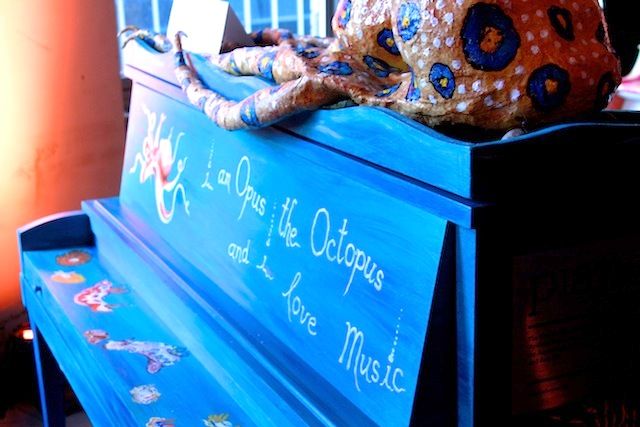
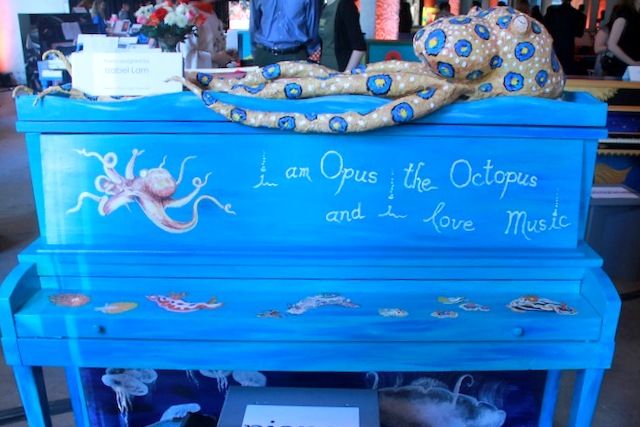
By far one of the most breathtaking pianos on display was the Opus the Octopus piano. It was the first piano we truly felt drew us in, probably because of Opus, the life-sized octopus lounging atop the ocean-themed instrument.
The seascape makes sense, given designer Izabel Lam’s personal inspiration for her other work; according to her website, “her passion for the beauty of the sea derives from her birth place, Hong Kong, where she spent her childhood next to quickly moving water expanses: typhoons, followed by sudden tranquility.”
2. Make Your Mark, designed by Laura Ricciardi

A relative newcomer to the art world (and to the Sing For Hope Pianos project), Laura Ricciardi has her background in law, but her passion has always been visual art. Her “Make Your Mark” piano called for would-be piano players to not only play their own music on the piano, but also to leave their fingerprints behind afterward.
“So the idea was, what if you were the artist, you as the person coming to the piano? What if we were all the artists together?” Ricciardi said. “The idea is that each individual mark, together, can create a collective, beautiful whole.”
Ricciardi’s vision of the piano as a vehicle for collective, public artistic authorship sprung from her own experience of interacting with one of the pianos from the first year of the project.
“I remember when I saw the pianos the first time around, and I just sat at the bandshell in Central Park for about an hour and a half and watched all the people play, and it just inspired me. I think that we live in New York, where we all kind of walk around alone–we walk on the same sidewalk, we take the same subways, but we don’t really interact with each other, so it’s cool to see so many different people brought together by this piano, of all things.”
3. The Face Piano, designed by Brooke Pelcynski
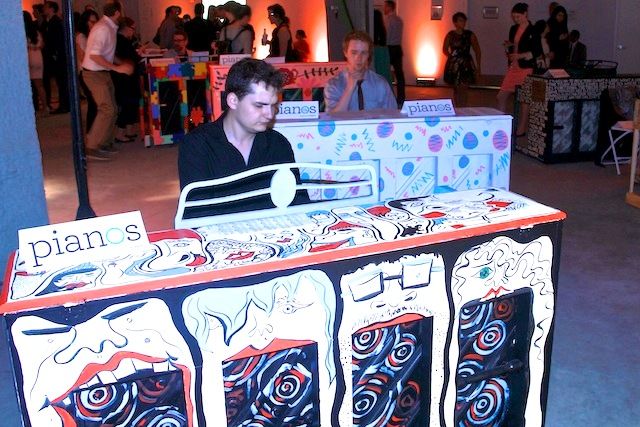
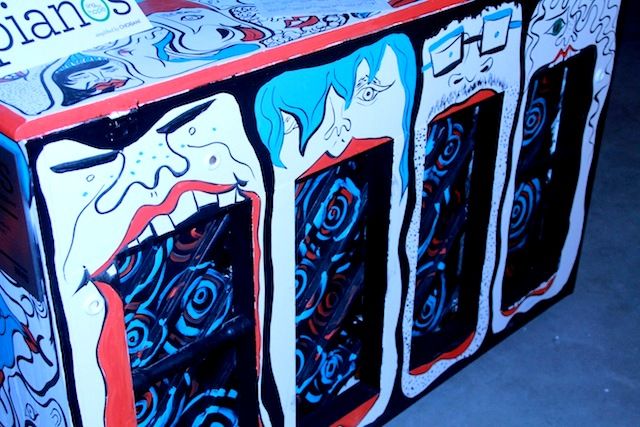
One of the most visually stunning pianos of the event was Brooke Pelczynski’s contribution, a piano covered in singing faces in bright blue, white, red, and black. The artist’s illustrations are indicative of her previous work.
Though Sing For Hope provided the artists, like Pelcynski, with the pianos themselves and the paint necessary to paint the pianos, any other materials used in decorating the pianos had to be provided by the artists themselves. Pelcynski’s piano was one of the most interesting pianos that used paint alone.
4. Pom Pom Piano, designed by Allison Patrick and Elizabeth Van Buren of Zipper 8 Lighting
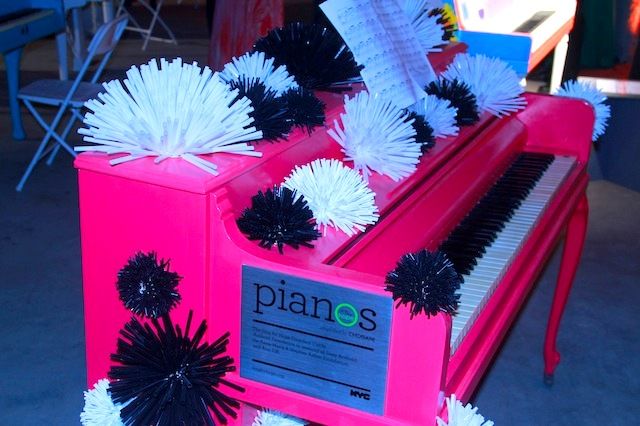
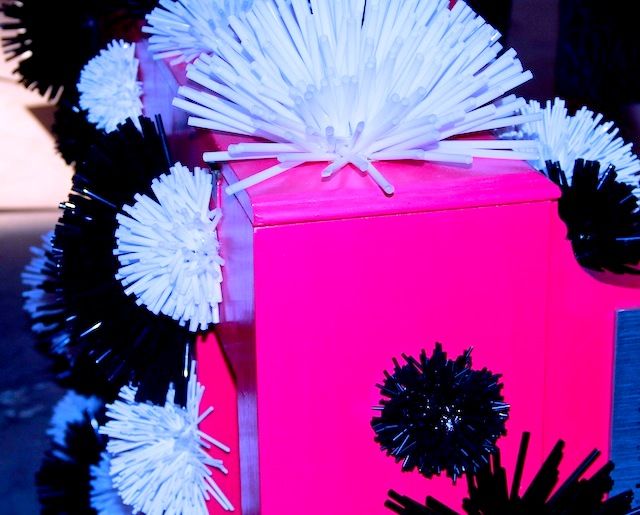
Though Allison Patrick and Elizabeth Van Buren of Zipper 8 Lighting have worked with Sing For Hope before (they made the centerpieces for a different Sing For Hope benefit last October), this was their first year designing a piano. But being new to the game didn’t stop them from making our list–their hot pink pom pom studded piano was one of the most memorable instruments on display. (And how could it not be? The pom poms themselves are made of drinking straws–in fact, the two artists used more than 7,000 drinking straws for the piano alone!)
“I guess its kind of a futuristic coral reef. In some ways, we were inspired by sea urchins and natural forms, but also by the industrial,” said Patrick, of their design concept for the piano. “We’re always inspired by nature and just the concept of how can a single unit, when it’s repeated, become something so much greater than itself. We wanted to really create an environment that would just draw people in. We wanted to make it kind of its own place, so when you’re sitting at it [the piano], you’re kind of in a different world.”
Well, we were certainly intrigued by the prickly piano, and we think it’ll be a big hit with the New York public, too.
5. The Improv Piano, designed by Brad Benson and the Magnet Theatre
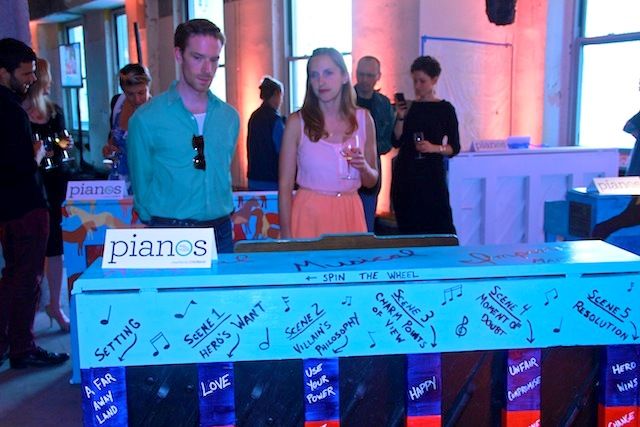
Probably the most collaborative of the pianos was the Improv Piano, designer Brad Benson hoped would embody the playful spirit of improvisation and inspire its players. On one side of the piano is a spinner which directs you to play music that evinces one of the five traditional scenes written along the back of the piano, and the posts list examples (e.g. For scene 4, the “moment of doubt,” one example of a scene idea is to include an”unfair compromise”).
Like many of the first time designers here, Benson got involved with the project after Sing For Hope posted an open call for portfolios and piano design ideas on their Twitter account.
Photos courtesy of Rebecca Boeshaar.
Subscribe to our newsletter